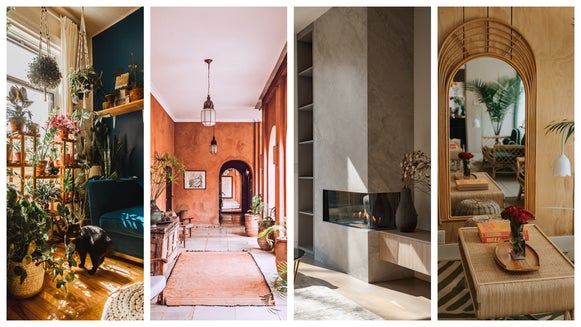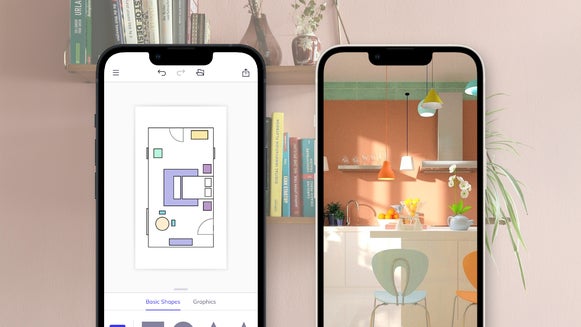6 Interior Design Tips for a Stunning Home
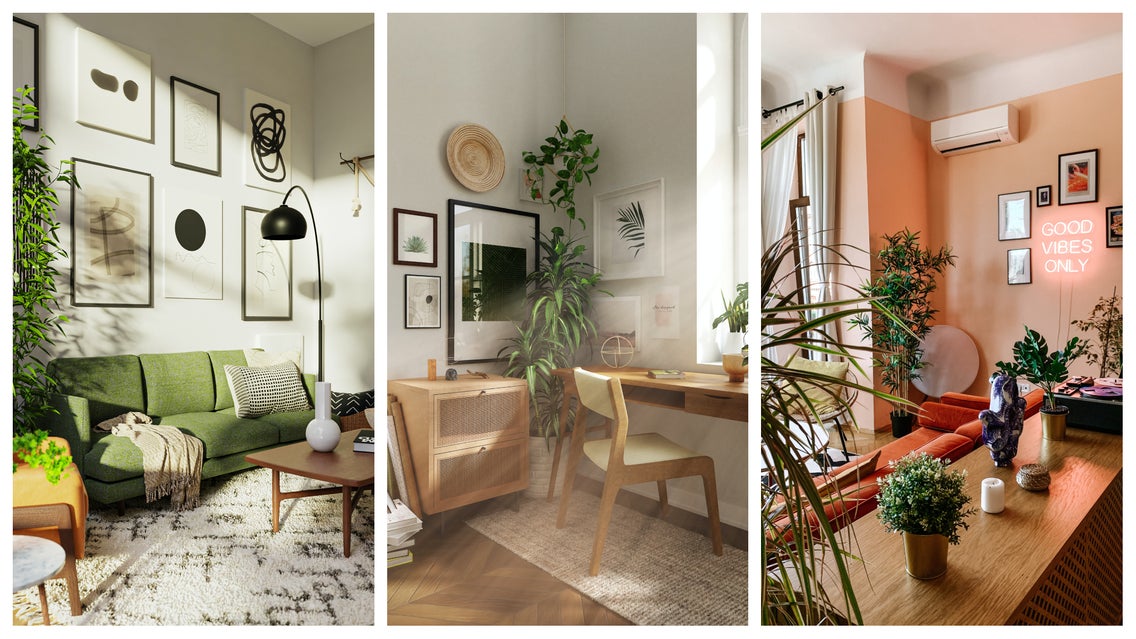
It happens to the best of us: You move into a new place. You have big plans to paint, redecorate, and live your HGTV dreams. Then life gets in the way, and now you’ve been using the same furniture, stale paint, ancient posters, and boring layout for three years. So how do you get inspired to redesign the home you’re so familiar with? How can you completely refresh your interior design, especially on a budget?
With these six simple interior design tips, you can give any room a complete facelift in just a few days. Tools like BeFunky's Collage Maker make the interior design process easy by keeping you inspired and on track with your vision. No post-renovation regrets here: These are small, inexpensive changes that anyone can accomplish, even if you’re renting.
1. Understand Your Space
The first thing you should do before decorating a room is to understand what you can and can’t change about your space. Unless you’re doing a complete overhaul, there are certain things you just can’t move around: windows, walls, cabinets, wiring, and other large appliances and fixtures. These are things you’ll need to work with, not against. Once you do that, you’ll feel much more content in your space.
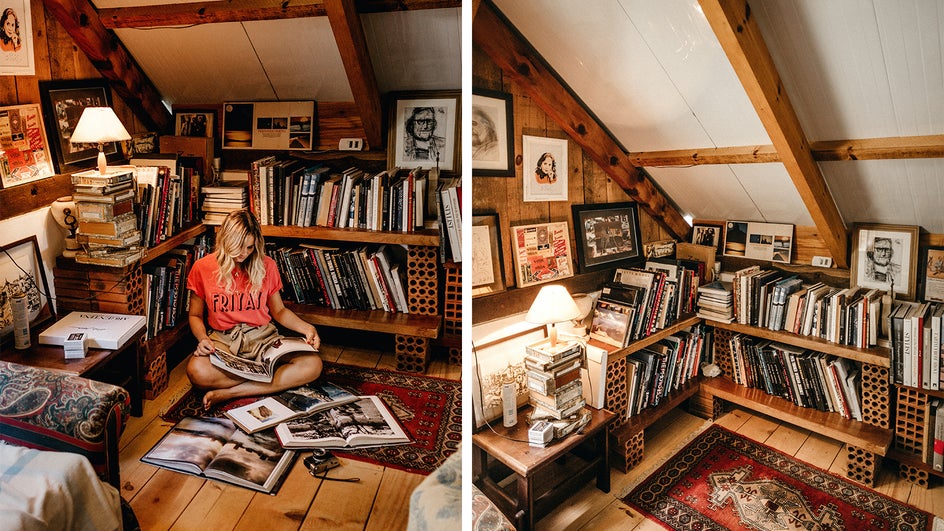
For instance, if there’s an awkward nook in your home that’s been bugging you, find a creative purpose for it. The attic corner above is made functional by using low shelves and a rug that makes the corner its own space. Narrow walls can often be used for hanging purses, coats, or keys. Rather than trying to paint all the wood trim in your house, consider picking wall paint that makes the natural wood look its best. This attic uses wood for the shelves that match the beams that are already there. Even if you never use the fireplace in your living room, don’t ignore it when decorating – after all, it’s already part of the decor!
The 80/20 Rule
That brings us to the 80/20 rule in interior design. When mixing and matching decor, you should use around 80% of one style, and 20% of another style. Trying to combine things 50/50 just makes a room look cluttered and unfinished. Try to lean into the style your home is already in and use this as your primary 80%. If you think the style is dated or not right for you, remember that paint can do wonders.
Using Natural Light
Another enormous aspect you can’t change about your space is the natural light. Rooms with south-facing windows get the most ideal direct sunlight. East-facing windows allow for warm light in the morning and cool shadows in the evening; the opposite goes for windows that face west. North-facing windows get the least light throughout the day.
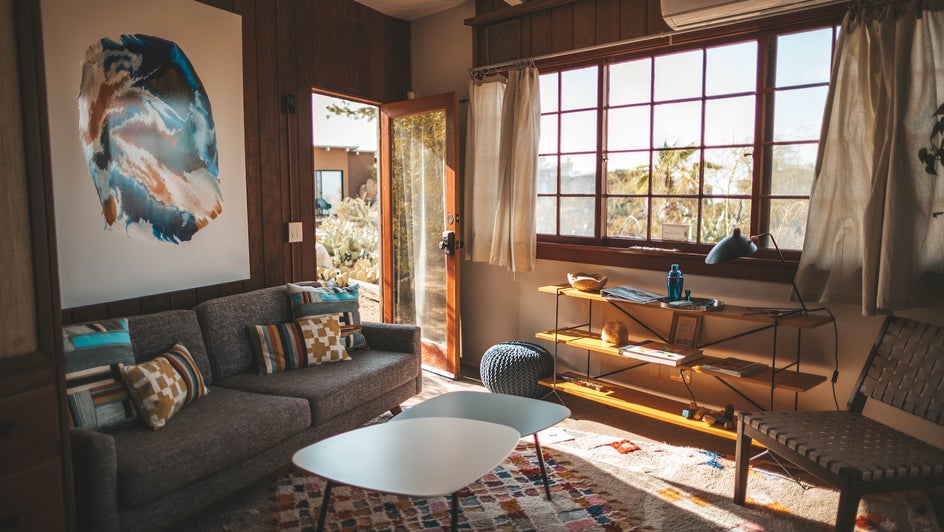
You can try to brighten up your darker spaces, but having too much artificial light is tiring on the eyes. As with the rest of your decorating, try to work with the light and not against it. Use warm colors in dark rooms to make them feel cozier. If you’re trying to create a dreamy houseplant paradise, don’t do it in a room with only north-facing windows. Conversely, if you want a TV to be the focal point of a room, place it against a wall that doesn’t get much sunlight.
2. Have a Clear Vision
Once you understand your space, it’s time to get inspired. Gathering interior design inspiration is so easy that it can feel like you’re not doing any work at all – but getting inspired is a vital step in designing your home! This is where that dreaded algorithm actually comes in handy: Browsing sites like Pinterest and Instagram can help you identify the design styles, colors, and pieces that you like, and lead you to similar inspiration. You can also flip through interior design magazines or art books for some timeless techniques.
This is where you’ll find out if your interior design style leans contemporary or mid-century, French or Scandinavian, glam or shabby chic, minimalist or maximalist. Even if you don’t have the words for your style, you’ll have the visual inspiration! Understanding what you like and dislike is one of the first steps in interior design planning, which makes browsing images really helpful for DIYers. But once you’ve got a ton of visual references, you’ll need to put it all together.
Pinterest boards can be unruly to scroll through and can’t really be used offline. The same goes for your saved Instagram posts. Instead of trying to manage all these different platforms, you can upload your favorite images into the Collage Maker to create one cohesive vision board. Try out the Collage Wizard to get a perfect collage layout in seconds.
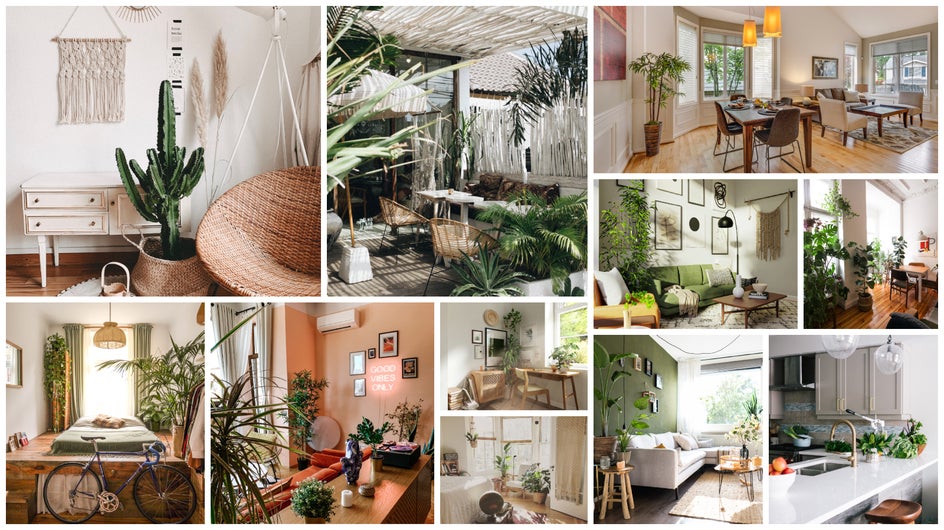
You can use this vision board as a reference when you’re shopping and decorating, and even print it out to hang on the wall. This will help you keep your vision on track when you’re feeling lost. Don’t forget to add your color palette once you’ve decided on one!
3. Use Color Thoughtfully
Speaking of color, exactly how do you create and apply a color palette to your space? The 80/20 rule actually applies here as well. In general, 80% of your room should be a light or neutral color; 20% should be a dark or saturated accent color. Of course, there are some exceptions to this rule, like when you want to create a very dark or very colorful space, but in general, this works for most people. The 80/20 color rule will result in a room that’s not too overstimulating, but not too dull. You could also follow the 60/30/10 rule, where 60% of your room is one neutral color, 30% is a secondary color, and 10% is a bright accent color.
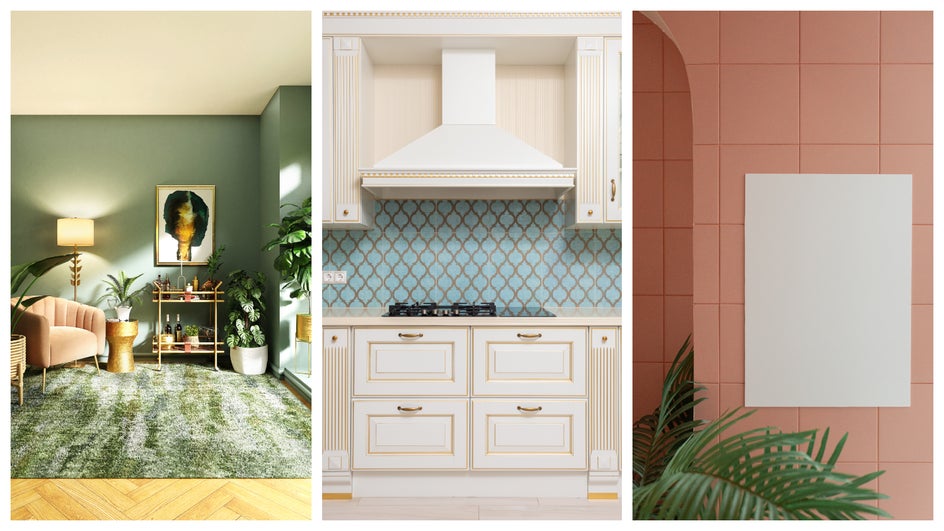
When picking colors, consider what energy and aesthetic you’d like to bring to the room: Natural and earthy? Bright and energetic? Stately and subdued? Reference your vision board for colors that occur frequently. Don’t forget to take into account the fixed parts of your space, like appliances and countertops. If you’re not sure how to combine colors, here’s some more info on creating your own color palette.
4. Small Changes Make a Big Impact
Context is everything. If you hate your dated countertops, don’t change your countertops – change the context. Painting cabinets, changing hardware, and updating your central lighting fixture can make it look like you remodeled the entire kitchen.
The same goes for the other rooms in your home. Small changes like painting walls, trim, cabinets, and furniture can have an enormous impact. Changing out old hardware like doorknobs and light switches has more of an effect than you think.
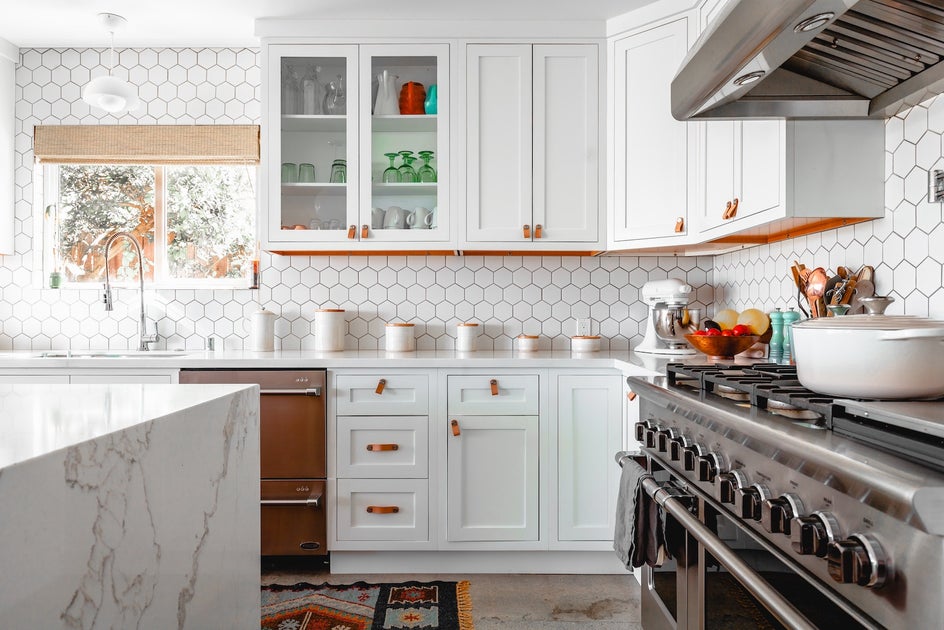
Another (free!) way to completely switch up your space is to move your furniture around and change the layout of the room. Besides making an old room feel new again, this allows you to reconsider what you currently own and set up your space in a way that’s truly functional.
Curtains, rugs, and wallpaper are small accents that do a lot of legwork in adding character to a room. Here’s a great article on how to choose the right curtains for your space. Area rugs can tie a whole room together, and allow for a clear division of space in open-concept homes. Wallpaper makes for a wonderful statement piece: Consider trying it on shelf walls, in bathrooms, in small nooks, or on one wall of a larger room to create a focal point. For a look that’s truly you, you can even create your own custom wallpaper.
5. Find a Statement Piece
Having a statement piece may be just what you need to make your room feel professionally designed. A statement piece can be anything: A couch, a fireplace, a painting, or even your kitchen stove. What this does is create a focal point for your room that you can then decorate around. A statement piece should be bold, a good size for the space, and the first thing that draws people’s eyes when they walk into the room. There can only be one statement piece per room to make it feel intentional and cohesive.
The following living room looks fine, but not very noteworthy. The frames on the walls don’t occupy enough of the space, and the seating choices are two competing colors. There are no consistent accent colors or textures.
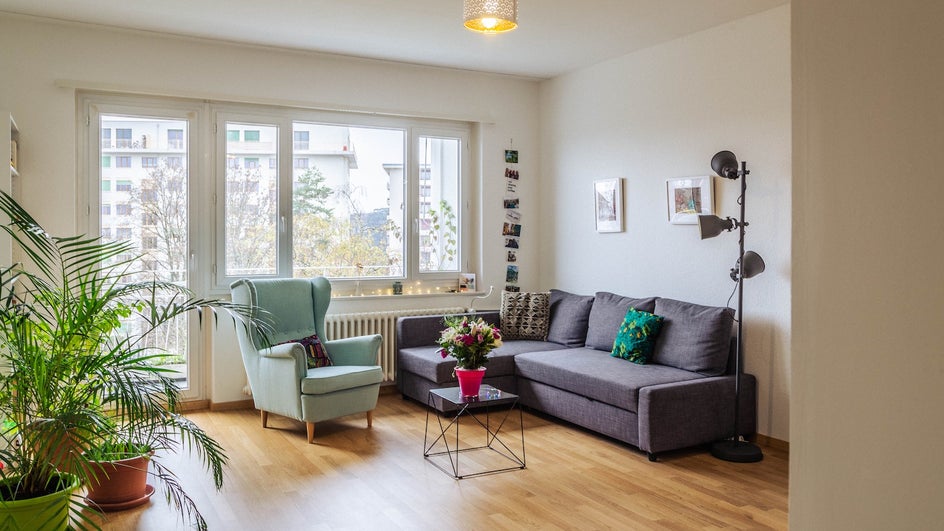
This living room, meanwhile, has interesting geometric art as the statement piece on the wall. These pieces fill the wall. The seating, a neutral color, is not competing for attention. The accent colors in the rest of the room all hint back to the statement piece.
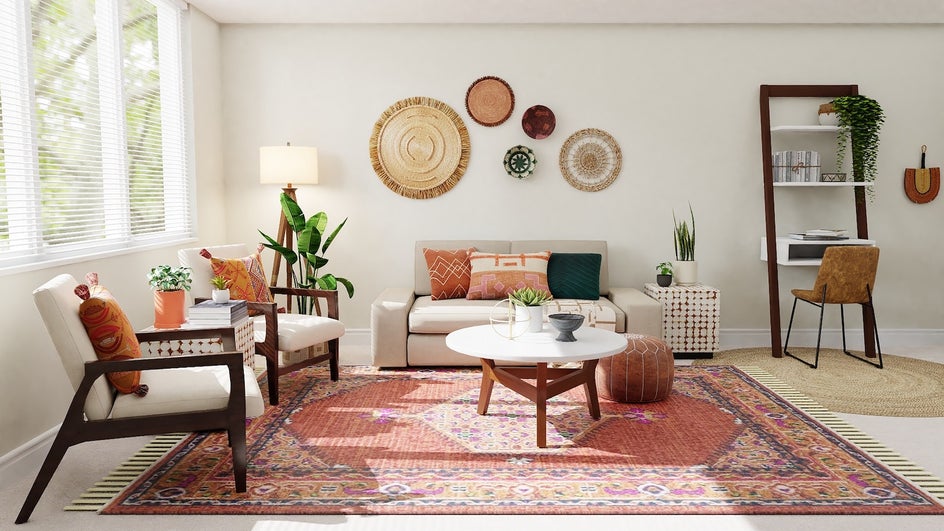
Just because a statement piece draws a lot of attention doesn’t mean it needs to be particularly expensive. Even a piece of furniture you already own can be a statement piece! What’s important is how you create the space around it. If you want to add a new statement piece to your room, thrifting is an amazing option: You can find art, light fixtures, couches, and more for pennies on the dollar. Even a wall can be a statement piece with the right wallpaper, shelves, or art piece!
6. Follow Your Heart, Not Trends
Ultimately, you know what you like and what you don’t like. Don’t get caught up in current trends just to have a home that’s “in fashion” – it will go out of fashion just as quickly. If you love bright colors, decorate with bright colors. If you’re drawn to ornate furniture, use it. If you want minimalism, curate your space minimally!
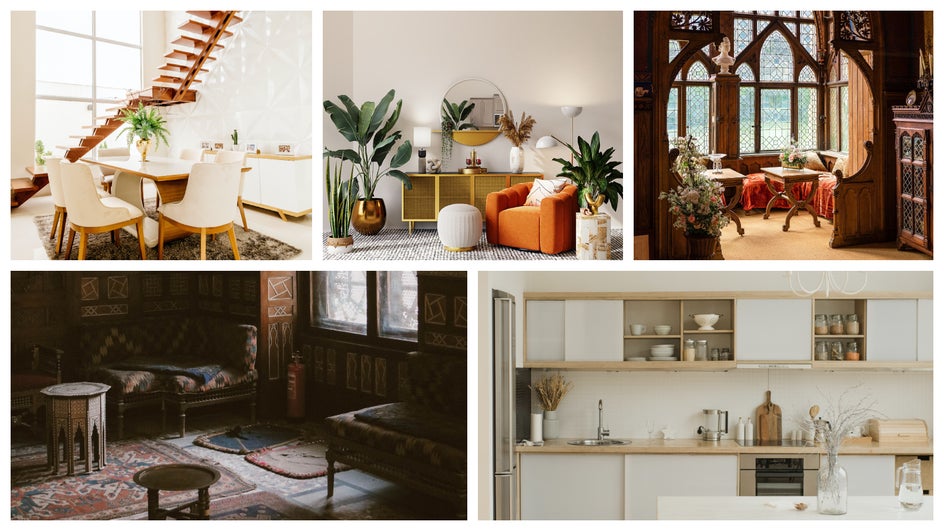
What will make your home truly timeless is having a space that you love and appreciate every day.
Design Your DIY Dream Home Today
You don’t need a professional interior designer to create a home that feels tailor-made for you. All you need is the right inspiration and a clear vision, and you’ll be able to transform your space into the home of your dreams in no time. An easy first step is to get all your ideas onto one page: You can put together your dream vision board today using the Collage Maker!










